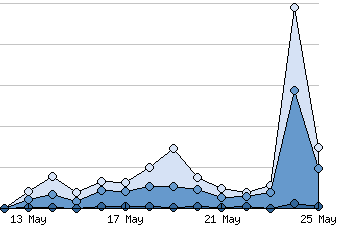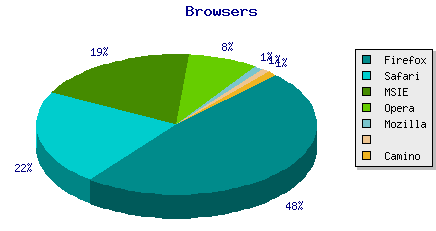Six JavaScript features we do not need any longer
Tuesday, June 21st, 2005Notice: The following is a “best practice document”. You can follow its advice and live happily ever after, but there might be situations where you cannot apply the ideas mentioned within. This is especially the case when you have to maintain an old product or complex web application. You cannot replace everything in those in one go – as you are very lucky indeed if you get the time and budget – but you can tackle those step by step.
According to many web designers at @media2005, JavaScript is sexy again, and in demand. Ajax is the new CSS was a quote in one of the presentations, that – taken out of context – makes my stomach go wonky.
Working largely with b2b sites and restricted environments, I never knew it was out of fashion.
It is a tool, much like a shovel, a screwdriver or a towel. While a towel is handy in every situation, as every HHGTTG reader knows, JavaScript has its place and its merits, but also its limitations and places it shouldn’t be applied to.
You can use a screwdriver to screw in screws or to clean your ears, however, the latter needs real skill, determination and a lack of fear of injuring yourself. It is much the same with JavaScript, you can use it for great things, but you can also use it to make a product inaccessible, confusing and not usable.
Here are some danger signs you encounter in many a bad script example and tutorials written in the spur of the moment rather than following proper research.
Things that should make you go Noooooooooooooooooo!
document.writeWhat this does is write out content to the HTML document, inside the body of the document and merrily mixed with the markup. Bad web developer, bad! Go to your corner! A better solution: reach the element you want viagetElementByIdorgetElementsByTagNameand then insert your newly created content (viacreateElementandcreateTextNode) there.This you encounter a lot in “Accessibility Tutorials” and it should “make sure that every user can use your site”. Actually, it is a sign that the script you use (or did) is bad and should have never been used in the first place. It is like using white-out on the wallpaper after you used your crayons there. Comment: I was asked to clarify this, as web application developers who have to rely on JavaScipt (which is a flaw in the application design IMHO) use noscript to tell the users they need JavaScript enabled. Normally this is added as a warning message at the start of the non-working page. The more logical option in this case would be to have the "no JavaScript" message in the document and replace it with a link to the application when Javascript is available. Check this example page on how to avoid noscript. Turn JavaScript on and off to see the difference.href="javascript:", onclick="javascript:"There is no such thing as a JavaScript protocol on the web. Links use protocols to connect documents. Create real links or don’t use any link at all – do or do not, there is no try!onclick="void(0)"Why would one put effort into creating something that by definition is not doing anything? Glossing over bugs and bad scripting, that’s why. A link that only points to a JavaScript function should be added via JavaScript.document.all , document.layers, navigator.userAgentUnless your defined project environment is MSIE 5.x and Netscape Communicator 4.x (my condolences if it is), there is no need for that any longer. Object detection is so much better than trying to guess what the browser in use is, and the W3C DOM is also more likely to be used in future UAs than the bespoke Netscape or Microsoft ones. (If you say “huh, what?” now, just trust me that everything withdocument.getElementByIdis much more stable than the other two mentioned earlier)onmouseover="myCall('I','pity','the','foo',1233,'I aint going on no plane')"Anything crucial to the user experience that you generate via JavaScript needs to be in the document anyways – for users without JavaScript. Reusing this markup is a lot easier, cleaner and more maintainable than sending a lot of parameters. If there is any reason to send parameters, a simple ‘this’ does the trick in most of the cases, as you can navigate through the DOM from there.
On request
And what about innerHTML?
As some pointed out in the comments, innerHTML is another way to create content on web sites. In some cases, it is even the fastest method, as Peter-Paul Koch found out when comparing methods to generate content. However innerHTML is neither standard, nor applicable to any DOM scripting outside the browser environment. There is an excellent discussion about innerHTML on developer-x. My personal view? innerHTML makes it a lot easier, but advertises HTML documents as strings rather than node trees, and that makes it hard for junior developers to go further in their scripting ventures.
Partly inspired by Robert Nyman’s recent post about JavaScript



